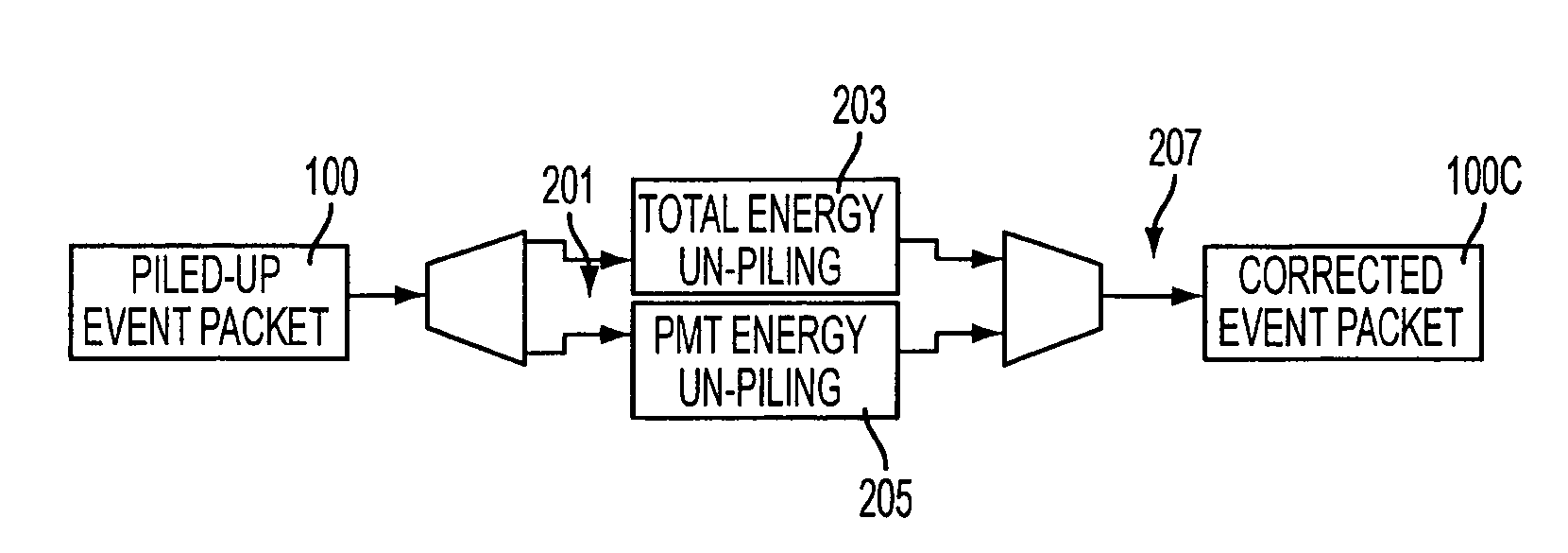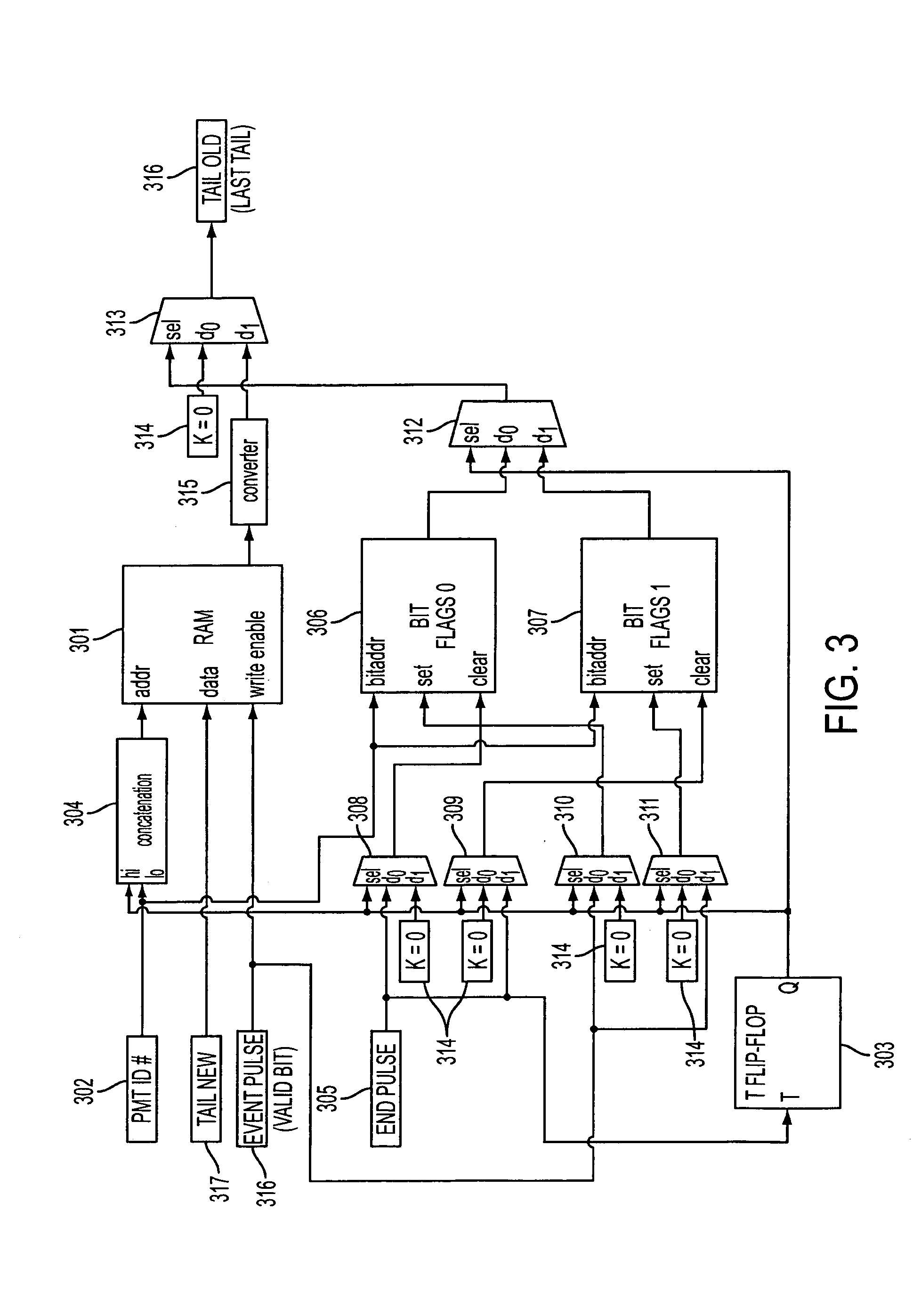Pipeline processing of pulse pile-up correction in a nuclear medicine imaging system
a nuclear medicine imaging system and pipeline processing technology, applied in the field of nuclear medicine, can solve problems such as inaccurate information, pulse pile-up would be meaningless, and it would be difficult to find useful valid events
- Summary
- Abstract
- Description
- Claims
- Application Information
AI Technical Summary
Benefits of technology
Problems solved by technology
Method used
Image
Examples
Embodiment Construction
[0026]Referring to FIG. 1, an event packet 100 is assembled by the detector electronics for each scintillation event detected. This packet then is sent to a processing module for pile-up correction processing according to a correction algorithm.
[0027]The packet 100 represents the partial integration of No samples of a scintillation pulse. The integration count is given in a packet field 105. The type of pile-up condition for the event pulse is given by the pile-up (PU) and short integration (SI) flags 101 and 103 respectively.
[0028]Referring to FIG. 6, a short integration (SI) condition is shown for event pulse #1 because of the occurrence of pulse #2 before the entire pulse #1 can be integrated (typically, a full integration contains 27 samples). As shown, pulse #1 has been integrated for only 7 samples (shown by square sample points) when pulse #2 occurs, which results in a combined pulse shown by the diamond sample points; thus, pulse #1 is “short-integrated” because it contains ...
PUM
 Login to View More
Login to View More Abstract
Description
Claims
Application Information
 Login to View More
Login to View More - R&D Engineer
- R&D Manager
- IP Professional
- Industry Leading Data Capabilities
- Powerful AI technology
- Patent DNA Extraction
Browse by: Latest US Patents, China's latest patents, Technical Efficacy Thesaurus, Application Domain, Technology Topic, Popular Technical Reports.
© 2024 PatSnap. All rights reserved.Legal|Privacy policy|Modern Slavery Act Transparency Statement|Sitemap|About US| Contact US: help@patsnap.com










